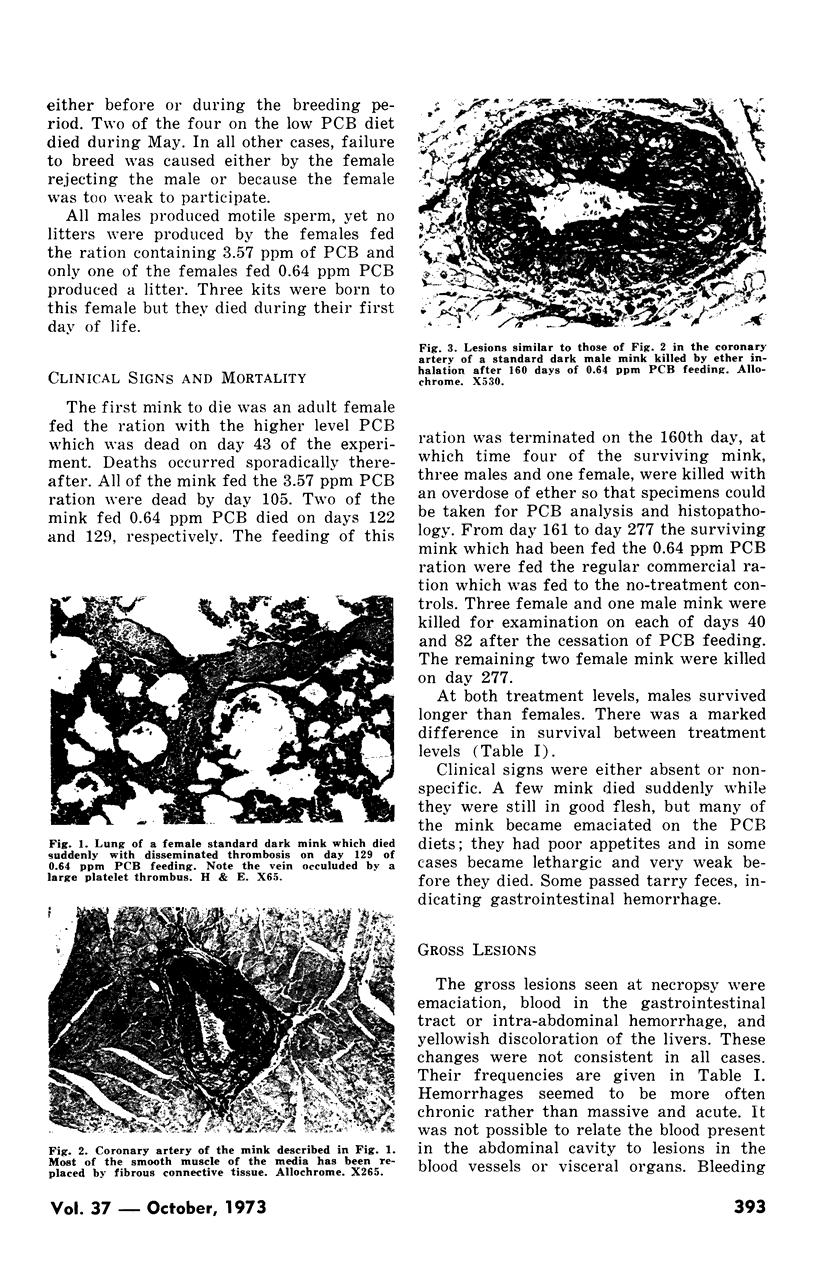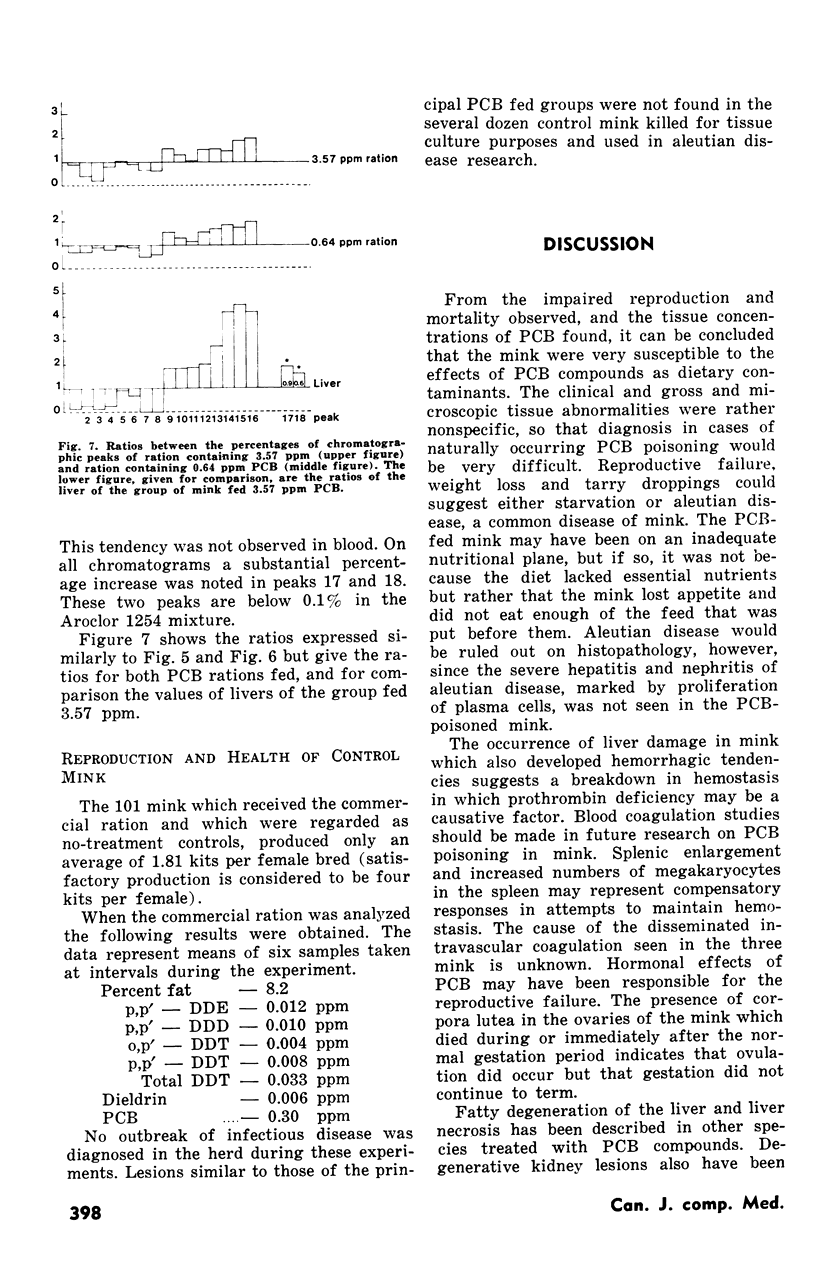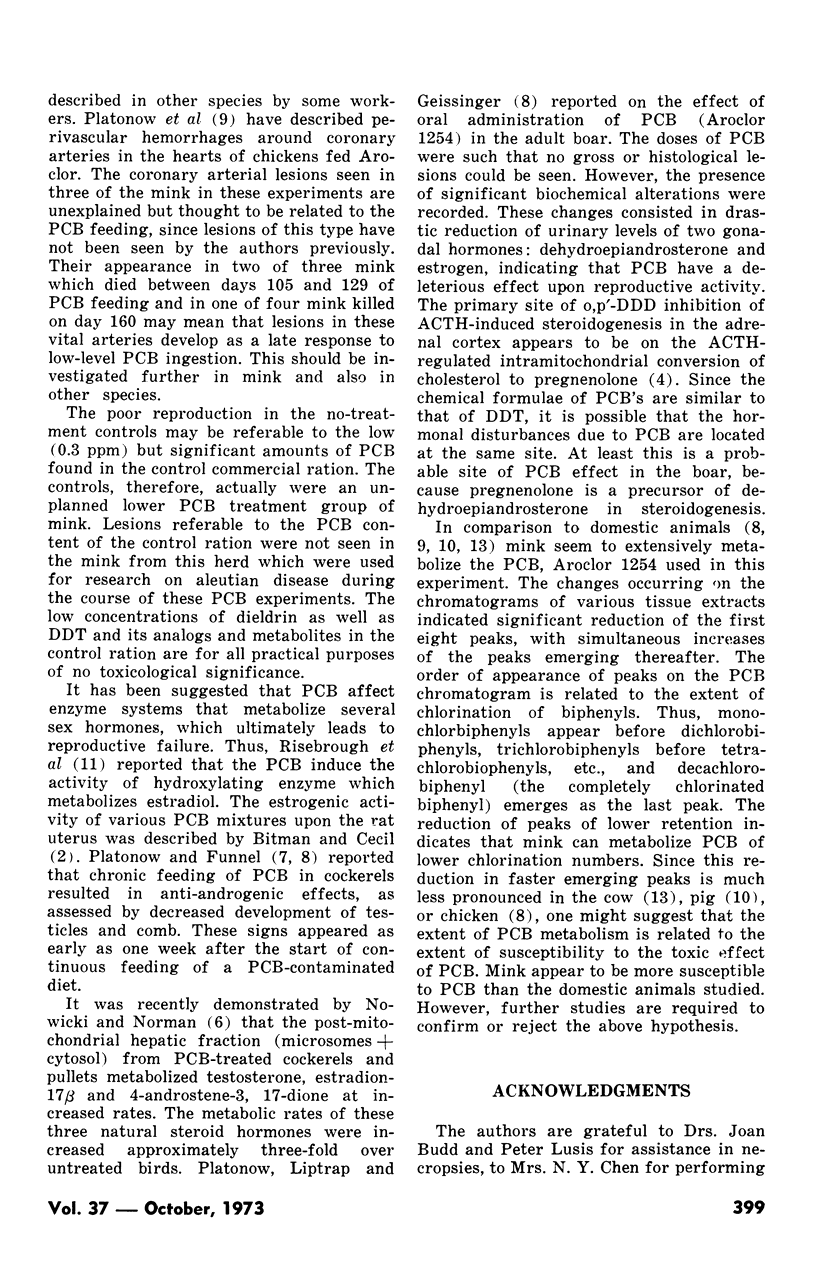Abstract
Poisoning occurred in 32 mink fed diets containing meat from cows which had been fed a polychlorinated biphenyl (PCB), Aroclor 1254. No live kits were produced and all adult mink died during a 105 day period of feeding a ration containing 3.57 ppm of PCB. At a level of 0.64 ppm of PCB in ration one of 12 mink produced three kits, all of which died during the first day after birth. Clinical signs were limited to weight loss and passage of black tarry feces. The gross lesions seen were yellowish discoloration of the liver and hemorrhage into the abdominal cavity or gastrointestinal tract. Microscopic lesions were nephrosis, fatty de-generation and necrosis of the liver, brain edema, disseminated intravascular coagulation, and fibrosis of coronary arteries. It is concluded that mink are highly sensitive to small quantities of PCB fed for an extended period of time.
Full text
PDF









Images in this article
Selected References
These references are in PubMed. This may not be the complete list of references from this article.
- Bitman J., Cecil H. C. Estrogenic activity of DDT analogs and polychlorinated biphenyls. J Agric Food Chem. 1970 Nov-Dec;18(6):1108–1112. doi: 10.1021/jf60172a019. [DOI] [PubMed] [Google Scholar]
- Grant D. L., Phillips W. E., Villeneuve D. C. Metabolism of a polychlorinated biphenyl (Aroclor 1254) mixture in the rat. Bull Environ Contam Toxicol. 1971 Mar-Apr;6(2):102–112. doi: 10.1007/BF01540090. [DOI] [PubMed] [Google Scholar]
- Hart M. M., Straw J. A. Studies on the site of action of o,p'-DDD in the dog adrenal cortex. 1. Inhibition of ACTH-mediated pregnenolone synthesis. Steroids. 1971 May;17(5):559–574. doi: 10.1016/s0039-128x(71)80157-5. [DOI] [PubMed] [Google Scholar]
- LILLIE R. D. The allochrome procedure; a differential method segregating the connective tissues collagen, reticulum and basement membranes into two groups. Am J Clin Pathol. 1951 May;21(5):484–488. [PubMed] [Google Scholar]
- Platanow N. S., Funnell H. S. The distribution and some effects of polychlorinated biphenyls (Aroclor 1254) in cockerels during prolonged feeding trial. Can J Comp Med. 1972 Apr;36(2):89–93. [PMC free article] [PubMed] [Google Scholar]
- Platonow N. S., Funnell H. S. Antiändrogenic-like effect of polychorinated biphenyls in cockerels. Vet Rec. 1971 Jan 23;88(4):109–110. doi: 10.1136/vr.88.4.109. [DOI] [PubMed] [Google Scholar]
- Platonow N. S., Karstad L. H., Saschenbrecker P. W. Tissue distribution of polychlorinated biphenyls (Aroclor 1254) in cockerels: relation to the duration of exposure and observations on pathology. Can J Comp Med. 1973 Jan;37(1):90–95. [PMC free article] [PubMed] [Google Scholar]
- Platonow N. S., Liptrap R. M., Geissinger H. D. The distribution and excretion of polychlorinated biphenyls (Aroclor 1254) and their effect on urinary gonadal steroid levels in the boar. Bull Environ Contam Toxicol. 1972 Jun;7(6):358–365. doi: 10.1007/BF01684460. [DOI] [PubMed] [Google Scholar]
- Risebrough R. W., Rieche P., Peakall D. B., Herman S. G., Kirven M. N. Polychlorinated biphenyls in the global ecosystem. Nature. 1968 Dec 14;220(5172):1098–1102. doi: 10.1038/2201098a0. [DOI] [PubMed] [Google Scholar]





